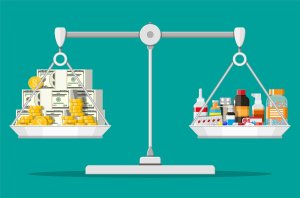Dear Mr. Cook,
In a recent article posted on this website, I criticized Carl Icahn’s call for your company to intensify its stock buybacks. In this letter, I’d like to explain more fully why I view the $51 billion already spent by Apple on open market (including accelerated) share repurchases under your leadership as a major misallocation of resources for both the company and the U.S. economy.
Unlike Mr. Icahn, I do not write to you as an Apple shareholder (I hold no Apple shares). Nor do I write as the satisfied Apple customer that I am. Rather, I am an academic economist who, through in-depth studies of high-tech companies and industries, has come to the conclusion that stock buybacks are eroding the foundations of economic prosperity in the United States.
There is mounting evidence that buybacks bear substantial blame for the extreme concentration of income at the very top and the disappearance of middle-class jobs in the United States over the past quarter century — a topic I discussed in a recent Harvard Business Review article.
As shown in a study, “Apple’s Changing Business Model,” that I coauthored a year ago, the previous time Apple repurchased shares in significant quantities, things ended badly. From 1986 through 1993, during the Sculley era, Apple spent $1.8 billion on buybacks (67% of net income) along with $328 million on dividends (12% of net income). In 1993, Apple distributed $273 million in buybacks and $56 million in dividends, even as profits plunged from $530 million to $87 million, compelling the company to do a $297 million long-term bond issue in 1994. The next year Microsoft released Windows 95, eliminating the Mac’s longstanding GUI advantage. With losses at $816 million in 1996, Apple was forced to issue $646 million in junk bonds, supplemented in 1997 by a $150 million private issue of preference shares to Microsoft.
Fortunately for Apple, Steve Jobs returned to the company in 1997. He did not entirely eschew buybacks: The company announced a $500 million repurchase program in 1999, of which $217 million were actually completed, mostly in 1999 and 2000. But as Apple’s profits multiplied from 2004 through 2011, it was clear that, as you now call it, ” return of capital” to shareholders was not a pressing priority for Mr. Jobs.
You clearly have a different point of view on distributions to shareholders. Let me ask you one simple question: How can Apple “return” capital to shareholders if those shareholders never supplied Apple with capital in the first place? As I pointed out in my earlier post, the only funds that Apple ever raised on the public stock market was $97 million (about $274 million in today’s dollars) at its IPO in 1980.
I know that finance professors at business schools throughout the nation teach MBAs and executives that, for the sake of economic efficiency, a company should “maximize shareholder value.” I disagree with this priority. MSV is based on the false assumption that, of all participants in the public corporation, only public shareholders run the risk of receiving no return on their contributions to the firm and therefore only they are entitled to profits if and when they materialize. However, there are two other important groups of people who invest in the corporation without a guaranteed return:
Taxpayers, through a wide variety of government agencies charged with spending on physical infrastructure and the nation’s knowledge base, regularly provide productive resources to companies without a guaranteed return. Through the tax system, business interests that gain from these investments return funds to the government. But tax regulations are subject to change, and hence the returns to taxpayers on their investments are by no means guaranteed.
Workers regularly make productive contributions to the companies for which they work through the exercise of skill and effort beyond those levels required to collect their current pay, and they do so without guaranteed returns. I doubt that I have to convince you, Mr. Cook, of the profound productivity difference between employees who just punch the clock to get their daily pay and those who engage in learning to make productive contributions through which they can build their careers and thereby reap future returns in work and in retirement. Yet these careers and the returns that they can generate are not guaranteed.
The irony of MSV is that the vast majority of public shareholders typically never invest in the value-creating capabilities of the company. Apple is a case in point, and it represents the rule, not the exception. Public shareholders, including Carl Icahn, do not invest in Apple’s productive capabilities. Rather, they trade in outstanding shares in the hope that their market price will increase. And, legitimized by MSV, a prime way in which corporate executives fuel this hope is by doing massive stock buybacks.
In your testimony to Congress on May 21, 2013, when you explained Apple’s tax practices, you said: “You can tell the story of Apple’s success in just one word: innovation.” I agree and ask you to consider what public shareholders and stock buybacks have to do with innovation at Apple.
Here are a few suggestions about how Apple can use its profits to support the innovation process and contribute to sustainable prosperity in the U.S. economy.
Employee education. Deepen Apple’s commitment to support the educational attainment of the company’s labor force, including those bright young people who serve in Apple Stores. I know that Apple already provides $5,000 per year to cover tuition costs for “eligible” employees. That’s nice, but it’s not enough given the current costs of higher education (a single course can cost $5,000). If Apple were to quadruple the amount per eligible employee to $20,000 (perhaps covering both tuition reimbursement and, if money is left over, an incentive subsidy to the employee for pursuing further education), I am guessing that the extra annual expense would be $600 million. That’s just 2.1% of Apple’s buybacks reported thus far for fiscal 2014. An increase in the tuition-assistance program would be a great investment in the future of Apple and the careers of its valued employees. Get rid of the buybacks, and there will be lots of money for other constructive programs to reward employees for their commitment to the company.
Employee incentives. Let performance pay do its job of incentivizing employees to invest their skills and efforts in the innovation process. Apple says that it does buybacks to offset dilution from the exercise of employee stock options or the vesting of stock awards. But what is the economic logic for this use of buybacks? Stock-based compensation is meant to motivate employees to work harder and better now to generate the competitive products that will result in higher returns for the company in the future. Therefore, rather than using corporate cash to boost Apple’s earnings per share (EPS) immediately, executives should be willing to wait for the stock-based incentives to generate higher earnings through innovation. Employees could then exercise their options or receive their vested awards at higher stock prices, and the company could allocate the increased earnings to investment in the next round of innovation. In this virtuous circle, buybacks have no role.
Social investment. When you defended Apple’s tax practices before Congress, you said: “We pay all the taxes we owe, every single dollar.” The issue for the nation is, however, whether our governments — federal, state, and local — have enough tax dollars to fund all of the public investments in infrastructure and knowledge that a prosperous nation needs. Over the past decade, our largest companies have wasted about $4 trillion on buybacks while much of America’s need for infrastructure and knowledge either went unmet or put us deeper in debt. We need CEOs like you to take the lead as responsible citizens in articulating a vision of the social investments required for the next generation. In doing so, CEOs could recognize how much their companies have gained from social investments made in the past.
Social innovation. If innovation is the story of Apple’s success, we need the widest possible diffusion of that innovation for our society to benefit. Even for the richest nation on earth, the problems of climate change, disability, discrimination, disease, pollution, poverty, and violence pose formidable challenges. To begin to solve these daunting problems, the nation needs not only Apple’s money but also Apple’s expertise — along with the organizational creativity, technological capability, and financial might of the nation’s other major business enterprises. Yes, Apple already has some sustainability initiatives in its supply chain and other areas. But it can do much more. It’s a travesty for Apple to throw away tens of billions of dollars on buybacks when it has the knowledge and power to contribute to the solution of a plethora of social ills.
I think you will agree that these suggestions are not alien to Apple’s innovative business model. But they stand in opposition to Mr. Icahn’s determination to tear that model apart. In his open letter to you he states: “Our valuation analysis tells us that Apple should trade at $203 per share today, and we believe the disconnect between that price and today’s price reflects an undervaluation anomaly that will soon disappear.”
Mr. Cook, I hope that you realize that Icahn’s valuation can be achieved only if those whose sole business is to extract value from the economy are allowed to prevail.
You and your board are in the position to decide whether that happens or not. The decisions you make will have ramifications far beyond Apple. Leading by example, you can play an important role in determining whether corporate America continues its stock-market-obsessed slide to the bottom or whether the nation can turn profits into prosperity, sustaining an innovative and inclusive race to the top.
Sincerely,
William Lazonick




